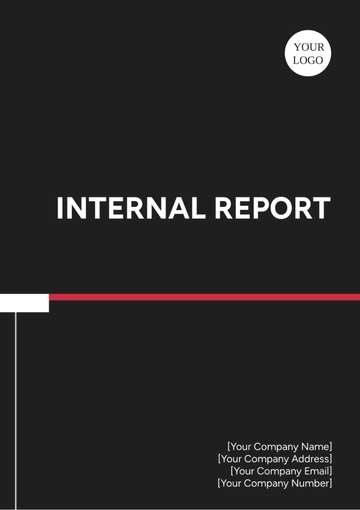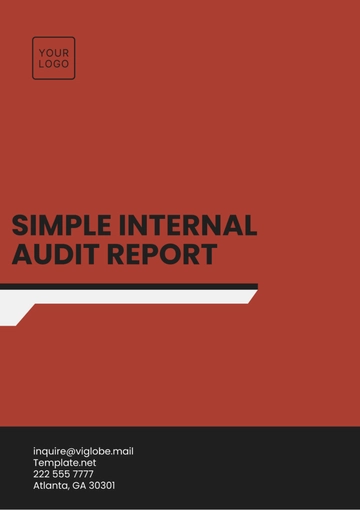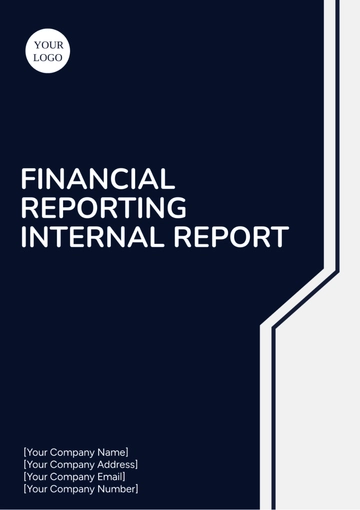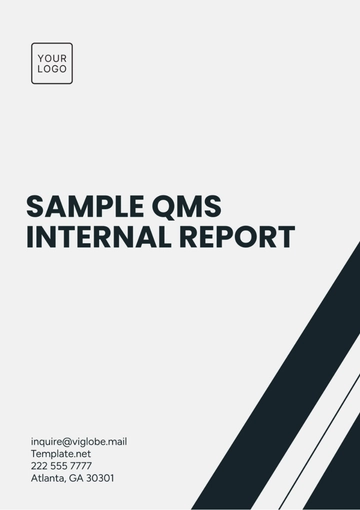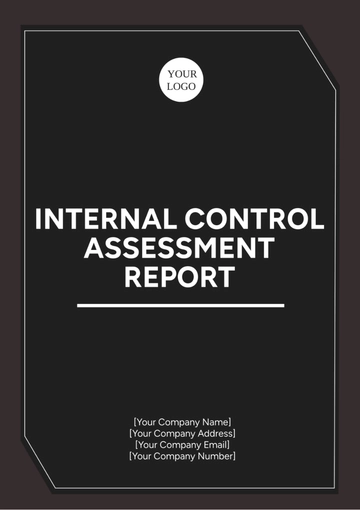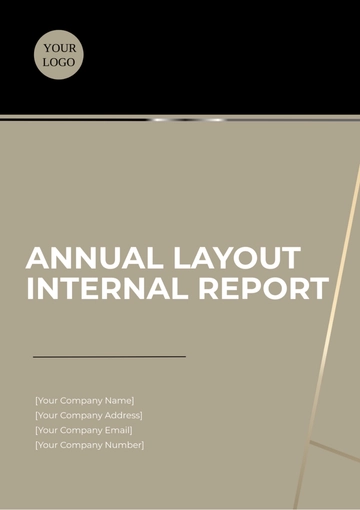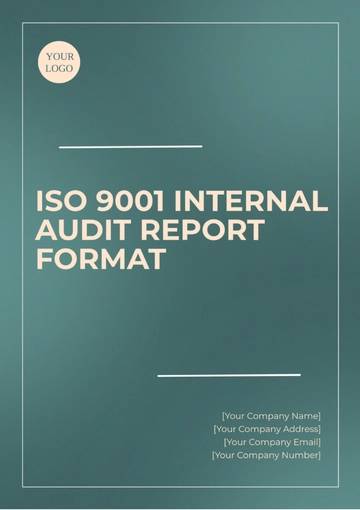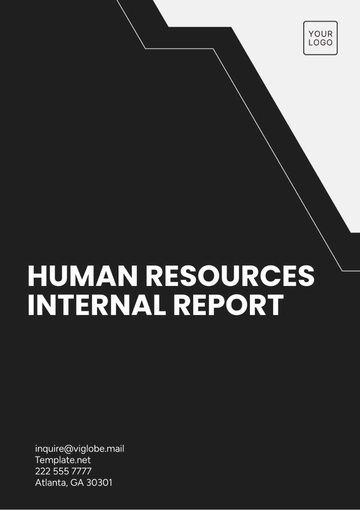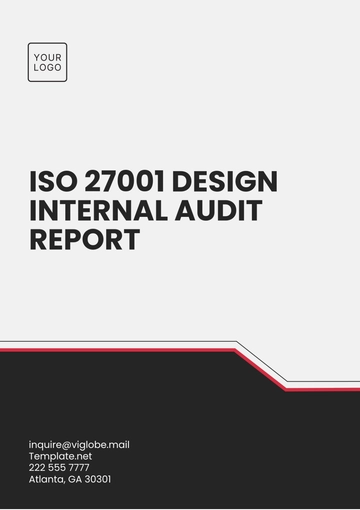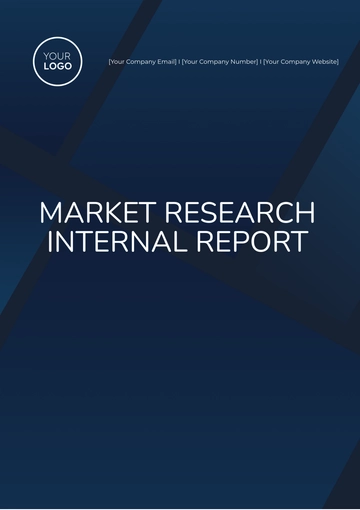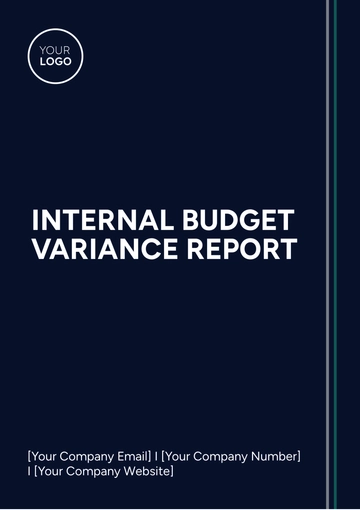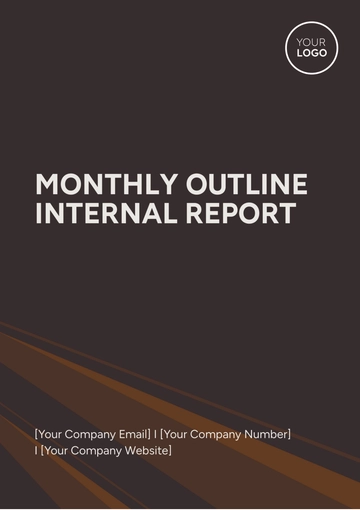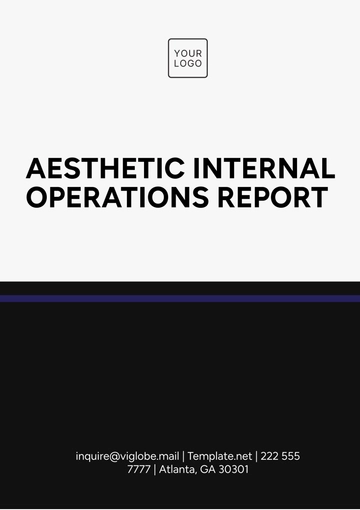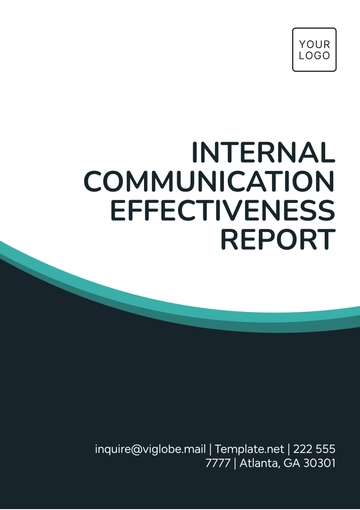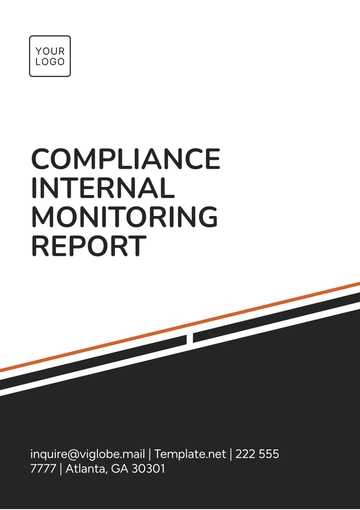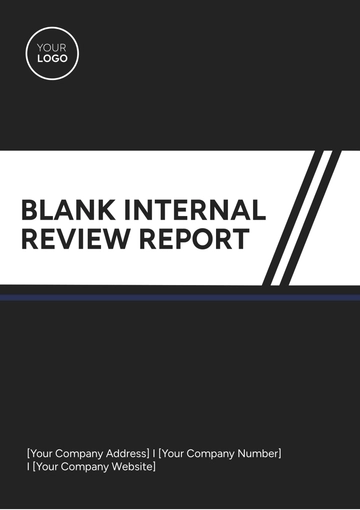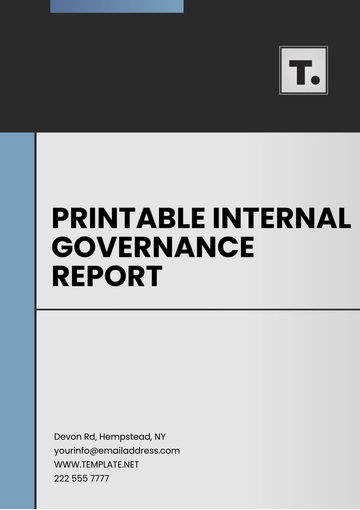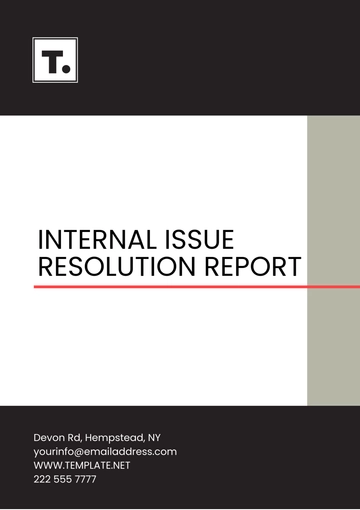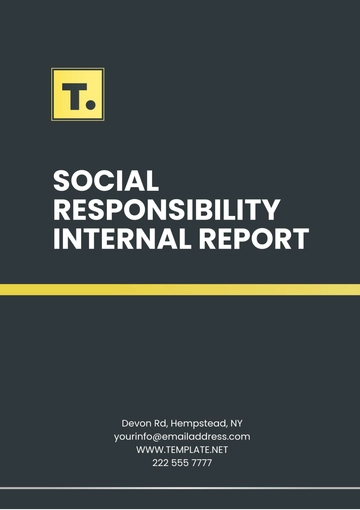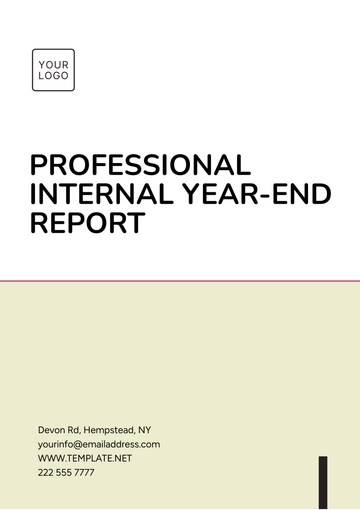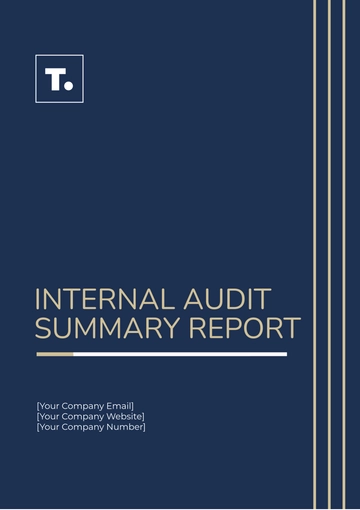Free Printable Internal Governance Report
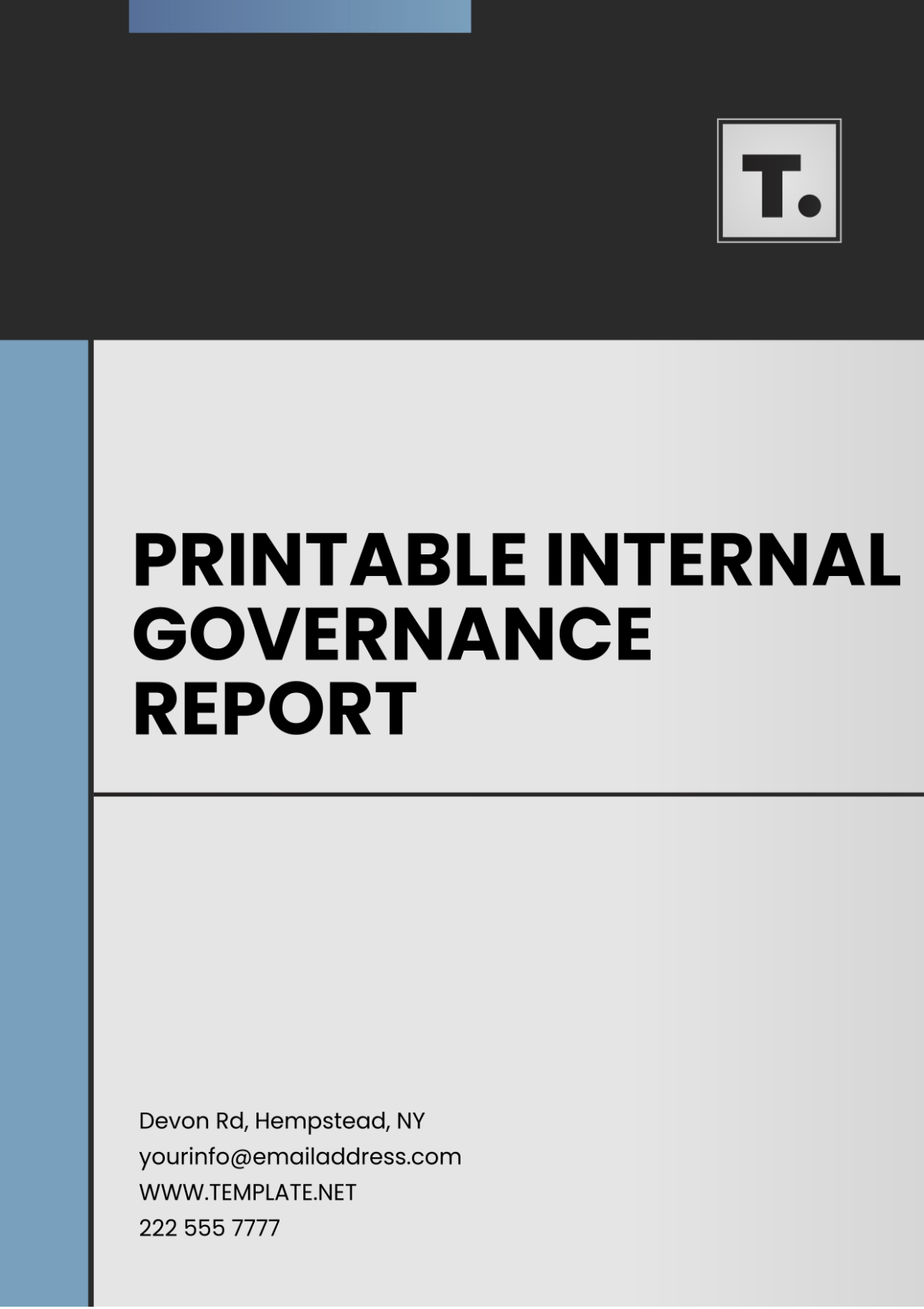
Date: March 1, 2060
Prepared by: Governance & Compliance Department
Executive Summary
This report outlines the governance structure, risk management, and compliance strategies implemented by [Your Company Name] for the fiscal year 2059. Our objectives remain rooted in upholding transparency, fostering accountability, and ensuring that our operations align with global regulatory standards. This document provides an overview of our governance milestones, emerging challenges, and the strategic initiatives taken to enhance oversight across all levels of the organization.
1. Governance Framework
Objective:
To establish a robust governance framework that reinforces ethical decision-making supports sustainable growth, and adapts to the rapidly evolving regulatory environment.
Current Structure:
Board of Directors
Chairperson: Dr. Samuel Turner
Board Members: Emma Chen (Head of Finance Committee), Omar Malik (Head of Audit Committee), Priya Desai (Head of Sustainability Committee), Javier Morales (Head of Risk Management Committee)
The board convenes quarterly to assess strategic alignment, performance, and regulatory compliance.
Executive Committees
Governance & Ethics Committee: Reviews and enforces ethical policies.
Audit & Risk Committee: Oversees financial audits, compliance checks, and risk assessments.
Sustainability Committee: Ensures that company operations adhere to environmental, social, and governance (ESG) standards.
Internal Departments
Compliance, Human Resources, and Operations Management work in tandem to uphold internal policies and standards.
Enhancements Implemented (2059):
Introduction of Advanced Compliance Automation Tools: AI-driven software now tracks regulatory changes in real time, reducing the time spent on manual updates by 40%.
Risk Forecasting Model Implementation: Enhanced predictive analytics allow for real-time monitoring and proactive risk mitigation, leading to a 30% reduction in unexpected financial losses.
2. Compliance & Regulatory Oversight
Purpose:
To monitor and enforce compliance with industry-specific regulations and global standards, ensuring that all operations within [Your Company Name] meet mandatory requirements.
Key Compliance Initiatives for 2059:
Data Privacy and Protection
Compliance with the 2059 Data Protection Act, focusing on consumer data integrity and privacy.
Implementation of an annual data protection training program completed by 98% of staff, reinforcing adherence to privacy laws.
Environmental Compliance
Adherence to the 2059 Global Sustainability Protocols, focusing on reducing carbon emissions by 25% over five years.
Transitioned 60% of facilities to renewable energy sources and implemented eco-friendly operational procedures.
Financial Reporting and Transparency
Enhanced internal auditing processes to align with the latest International Financial Reporting Standards (IFRS).
Streamlined reporting procedures that ensure timely and accurate disclosures, achieving a 100% on-time submission rate.
3. Risk Management
Objective:
To proactively identify, evaluate, and manage risks that could impact the operational integrity or financial health of [Your Company Name].
Key Risk Factors Identified in 2059:
Market Volatility: Regular fluctuations in industry trends have prompted bi-annual reviews of investment strategies to mitigate potential losses.
Cybersecurity Threats: Expanded use of machine learning in cybersecurity protocols to identify and neutralize emerging threats, resulting in a 25% decrease in cyber incidents.
Supply Chain Risks: Diversification of suppliers to avoid disruption due to geopolitical tensions, reducing dependency on any single region by 40%.
Risk Mitigation Strategies Implemented:
Establishment of a Dedicated Cybersecurity Taskforce: A task force responsible for identifying vulnerabilities and safeguarding critical data.
Scenario-Based Risk Analysis: Developed a model that simulates potential crises, allowing proactive measures to protect assets, resulting in a 20% increase in operational resilience.
4. Performance and Accountability
Objective:
Ensure that all departments and staff are held accountable for their contributions toward the company's governance goals, performance standards, and strategic objectives.
Performance Metrics for 2059:
Employee Compliance Training Completion Rate: 98%
Quarterly Audit Completion Rate: 100%
Reduction in Compliance Violations: Achieved a 30% reduction year-over-year in recorded violations.
Accountability Initiatives Implemented:
Introduction of Transparent KPI Reporting: Each department submits quarterly reports on KPIs tied to governance and compliance goals.
Employee Incentives for Compliance Excellence: A rewards program introduced to recognize individuals and teams who exemplify commitment to governance
principles, with a 15% increase in employee participation.
5. Strategic Governance Goals for 2060
Looking Ahead:
Enhancing AI Integration in Compliance Monitoring
Expand the use of machine learning tools to analyze compliance data, predict risks, and reduce manual oversight.
Strengthening Global Regulatory Adaptability
Establish a cross-functional task force to monitor, evaluate, and adapt to international regulatory changes swiftly.
Sustainability and ESG Goals
Aim for a 50% reduction in carbon footprint by 2065 through eco-friendly partnerships and facility upgrades.
Partner with eco-friendly suppliers to promote sustainability across our supply chain.
Cybersecurity Expansion
Allocate additional resources to cybersecurity initiatives, focusing on predictive models and real-time threat monitoring.
Conclusion
In 2059, [Your Company Name] has demonstrated substantial growth in governance capability, compliance management, and risk mitigation. By advancing our technology-driven compliance methods and fostering a culture of accountability, we are well-prepared to face future challenges. As we move into 2060, our governance goals will continue to prioritize ethical leadership, sustainable practices, and robust regulatory adaptability.
- 100% Customizable, free editor
- Access 1 Million+ Templates, photo’s & graphics
- Download or share as a template
- Click and replace photos, graphics, text, backgrounds
- Resize, crop, AI write & more
- Access advanced editor
This Printable Internal Governance Report Template from Template.net offers an editable and customizable solution for internal reporting. Designed for thoroughness, it’s easily adaptable to your organization’s needs. Editable in our Ai Editor Tool, this template ensures you present governance insights with clarity and professionalism, saving you time and enhancing consistency.
You may also like
- Sales Report
- Daily Report
- Project Report
- Business Report
- Weekly Report
- Incident Report
- Annual Report
- Report Layout
- Report Design
- Progress Report
- Marketing Report
- Company Report
- Monthly Report
- Audit Report
- Status Report
- School Report
- Reports Hr
- Management Report
- Project Status Report
- Handover Report
- Health And Safety Report
- Restaurant Report
- Construction Report
- Research Report
- Evaluation Report
- Investigation Report
- Employee Report
- Advertising Report
- Weekly Status Report
- Project Management Report
- Finance Report
- Service Report
- Technical Report
- Meeting Report
- Quarterly Report
- Inspection Report
- Medical Report
- Test Report
- Summary Report
- Inventory Report
- Valuation Report
- Operations Report
- Payroll Report
- Training Report
- Job Report
- Case Report
- Performance Report
- Board Report
- Internal Audit Report
- Student Report
- Monthly Management Report
- Small Business Report
- Accident Report
- Call Center Report
- Activity Report
- IT and Software Report
- Internship Report
- Visit Report
- Product Report
- Book Report
- Property Report
- Recruitment Report
- University Report
- Event Report
- SEO Report
- Conference Report
- Narrative Report
- Nursing Home Report
- Preschool Report
- Call Report
- Customer Report
- Employee Incident Report
- Accomplishment Report
- Social Media Report
- Work From Home Report
- Security Report
- Damage Report
- Quality Report
- Internal Report
- Nurse Report
- Real Estate Report
- Hotel Report
- Equipment Report
- Credit Report
- Field Report
- Non Profit Report
- Maintenance Report
- News Report
- Survey Report
- Executive Report
- Law Firm Report
- Advertising Agency Report
- Interior Design Report
- Travel Agency Report
- Stock Report
- Salon Report
- Bug Report
- Workplace Report
- Action Report
- Investor Report
- Cleaning Services Report
- Consulting Report
- Freelancer Report
- Site Visit Report
- Trip Report
- Classroom Observation Report
- Vehicle Report
- Final Report
- Software Report
